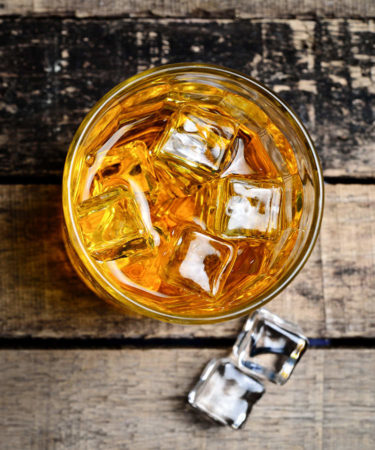
Over the last decade, bourbon’s popularity has skyrocketed, and there’s no wondering why. Its sweet, warming flavor profile is like a corn-based hug for your insides, on top of the fact that it goes down incredibly smooth. The strong aromatics and bold palate make it an ideal cocktail ingredient, yet its soft sweetness also makes it a perfect sipping whiskey. With the surge of bottles available on the market, bourbon has become a bit more complicated; we’re hearing terms such as “high-wheat” and “high-rye” thrown around in our local liquor stores and strewn across website ratings. So what exactly is the difference between a high-wheat and a high-rye bourbon, and what are some examples of each?
Bourbon’s signature sweetness comes from the fact that by law, the spirit must be composed of a minimum of 51 percent corn. The other 49 percent of the mash bill, a.k.a. the distiller’s special concoction for creating the whiskey, may be any combination of grains, such as rye or wheat, as well as malted barley. Adding rye to the mash bill imparts boldness to the whiskey, giving it spicy, robust flavor traits. Wheat tends to impart earthy, grainier notes to the whiskey, a flavor profile that most people find smoother and easier to drink. While rye components can be a bit more bold and in your face, wheat characteristics tend to be a bit more mild and subdued.
So what exactly qualifies a bourbon as “high-wheat” or “high-rye?” A mash bill containing 20 to 35 percent rye is considered to be a high-rye bourbon. Keep in mind that all bourbons, regardless of high-wheat or high-rye, are all distilled to no more than 80 percent ABV and bottled to be at least 40 percent ABV.
The best way to figure out the difference between high-wheat and high-rye bourbons is to taste them for yourself. Bulleit is definitely the most well-known high-rye bourbon. It’s very widely available all over the country and mouthwateringly delicious. Four Roses Single Barrel sits in first place for highest-rye mash bill at a whopping 35 percent. Basil Hayden’s and Booker’s are also great high-rye bourbons to taste. For high-wheat examples, seek out Old Fitzgerald, Maker’s Mark, and, if you happen to be extremely lucky, a good old bottle of Pappy Van Winkle. Happy tasting!
